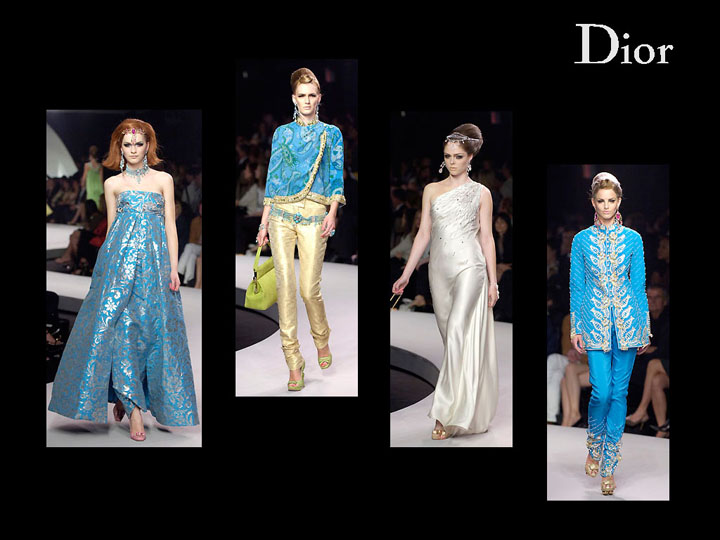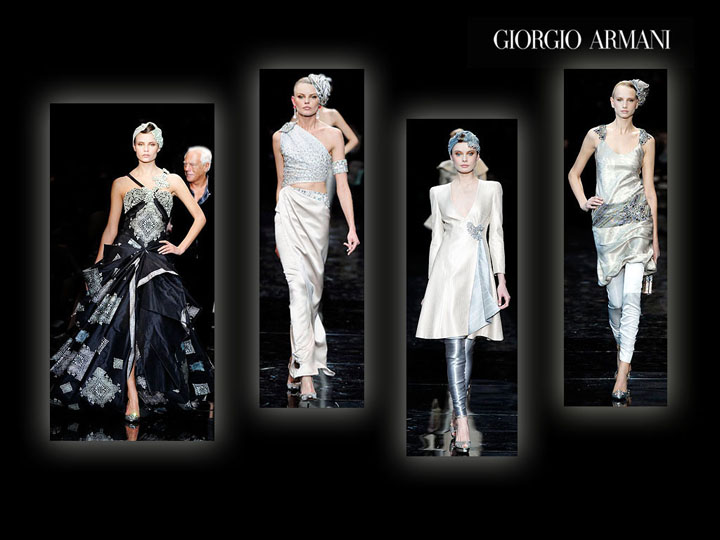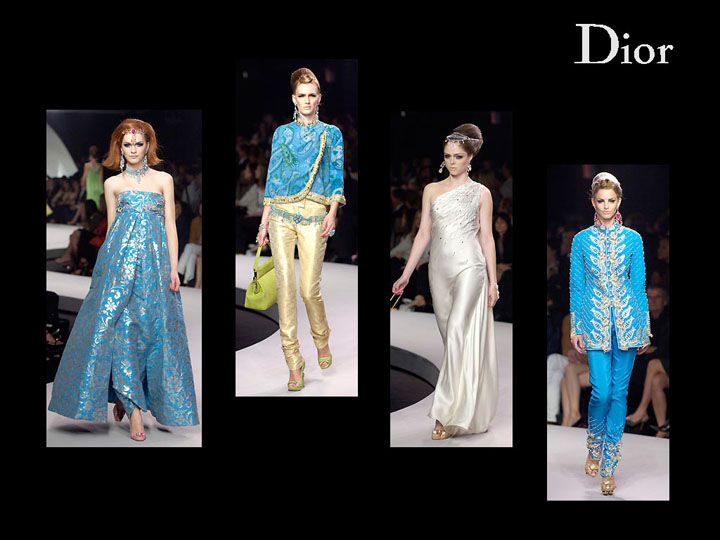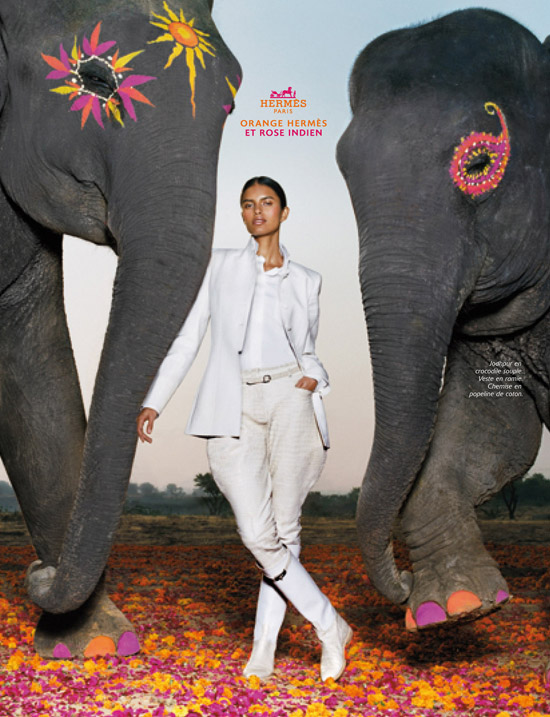It was the September of 2007 and as the Fashion Week for Spring 2008 came to an end, it seemed that India was the country du jour as designer after designer sent India-inspired collections down the runway.
While the country has always served as an inspiration for designers in the West, the collections shown at the fashion week weren’t just India-inspired. In some ways, they were unabashedly Indian.
Giorgio Armani’s couture Privé collection celebrated the quintessential Indian pants – the churidaar. While he teamed his contemporary slim churidaar pants with knee-length tunics and jeweled turbans, his glamourous gowns boasted an elegant sari-like drape and pleating. Avant-garde designer John Galliano’s resort collection for Dior incorporated so many Indian flourishes, from vibrant colors to eclectic prints and embellishments that I would have thought we have stumbled upon a show by an Indian designer, if I didn’t known better.


In 2008, the West’s love affair went beyond the fashion week. Hermès launched its ‘Hermès Orange Indian Pink’ campaign that featured the Indian model Lakshmi Menon. The luxury brand’s ode to India, albeit with a European twist, was embarrassingly rich in its reference to our fashion heritage – chic Nehru jackets, well-tailored jodhpurs, embroidered tunics, safari suits, flowing saris, and the ubiquitous turban in silk and lamé. It made me wonder if India was merely enjoying its global fashion moment, or if this new-found fascination was a sign of something more significant.
Perhaps, the opportunities offered by the emerging market in India, represented by a huge middle class and a growing population of High Net Worth Individuals, had so many designers excited. The following month, when Vogue, the ultimate arbiter of fashion and luxury, launched in the country, it seemed that India, at last, had arrived on the international fashion scene.

However, it made me wonder: what sort of role can the country’s indigenous fashion industry play in the development of ‘Brand India’?
Till then, the established names in global fashion – Armani, Dior and Marchesa – had explored Indian colours, silhouettes, embroideries and embellishments.
Those beautiful designs were sketched in their chic studios in Paris or New York, but every inch of the exquisite beading and embroidery work was done in India by designers and artisans who essentially worked in obscurity. Impeccable craftsmanship, which is at the heart of India’s design industry, was being beautifully leveraged by countless designers in Europe and America.
Yet, Indian fashion had no visible international platform of its own. Although designers like Manish Arora, Sabyasachi Mukherjee, Anamika Khanna and Rajesh Pratap Singh had shown their collections at fashion weeks in New York, Milan and Paris to critical acclaim, their couture wasn’t available for sale outside of India.
This despite the fact, that the demand for traditional apparel was high among Indians living outside the sub-continent. Although mass produced, generic garments are sold in ‘Little India’ districts from New York to Los Angeles, the vast majority of global consumers could buy haute couture or even premium Indian designer garments only on their visit to the country.
The lack of access to the marketplace inspired me to develop Couture Rani, an online fashion boutique, which bridges the gap between India’s luxurious design heritage and the Western markets. I knew that the business had to be online right from the word go. The Indian diaspora is vast and creating an online boutique was the best way to reach the target audience on a global scale.
Although building an online presence was crucial to the growth and development of India’s fashion brands, convincing the designers was an entirely different matter. Many believed that no one would buy a sari or lehenga online – the entire experience of buying a beautiful Indian garment is rather sensory, and includes touching, seeing and wearing it.
Over the years, massive growth in e-commerce, especially in the luxury segment, has helped bust that myth. Increasingly, high-income individuals shop frequently and spend more money online than middle-income people. While the mindset is slowly changing, it is imperative that Indian designers embrace the online medium; whether they like it or not, consumer behavior demands that.

What has added to the excitement of developing my online business is the scope that India’s fashion industry offers. Its sheer size and breadth is overwhelming. Our future, therefore, depends on how we explore innovative channels to reach our customers and create exciting opportunities for designers who are part of our portfolio.
India has the potential to create native global luxury brands, and we hope we can play a vital role in helping designers transform their businesses into economic powerhouses. The potential definitely exists. We discover, nurture and promote emerging talents and help established designers refine and expand their commercial goals. Our intent is not to become the next Net-a-Porter or Moda Operandi, but rather to be true innovators and leaders in this sector.




